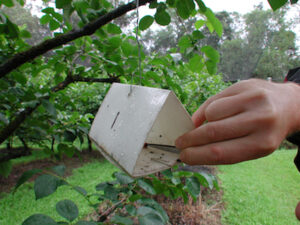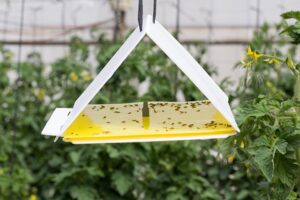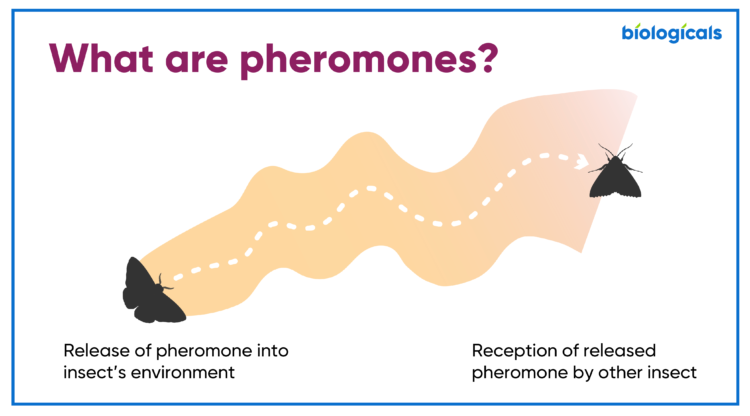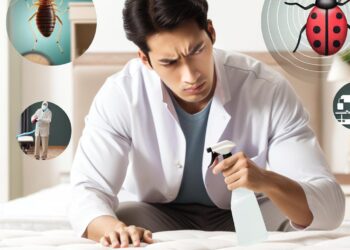Understanding the Use of Pheromones for Pest Control
Pests have been a constant threat to human health and food security since the dawn of agriculture. Insects such as aphids, caterpillars, and beetles can damage crops, while rodents like rats and mice can consume or contaminate stored grains and food items. Traditional methods of pest control, such as insecticides and rodenticides, have been widely used for decades, but they often come with their own set of drawbacks such as environmental pollution and health hazards. In recent years, researchers have turned to pheromones as a safer and more effective alternative to control pests.

Pheromone are chemicals secreted by animals, including insects and mammals, that act as signals to attract or repel members of the same species. In the case of pest management, researchers have identified specific pheromones that can be used to disrupt the mating behavior of insects, which is crucial for their reproduction and survival. By mimicking these pheromones or altering their chemical composition, scientists have been able to develop pest control strategies that target specific insect species without harming beneficial insects or the environment.
The use of pheromones for pest control is not a new concept. In the 1960s, researchers discovered that the female sex pheromone of the gypsy moth could be used to lure male moths into traps, preventing them from mating with females and reducing the population. Since then, numerous pheromones have been identified and used for pest management, including those of fruit flies, codling moths, and bark beetles. Pheromone traps are now widely used in agricultural fields, orchards, and forests to monitor and control insect populations.
The most common type of pheromone-based pest control is mating disruption. Insects use pheromones to find mates, and disrupting this process can prevent them from reproducing. In mating disruption, synthetic pheromones are released into the environment in a controlled manner to confuse male insects, making it difficult for them to locate females. The synthetic pheromones are usually placed in dispensers, which can be attached to trees, crops, or other structures. The dispensers release the pheromones over time, creating a cloud of scent that disrupts the insects’ ability to find mates. This can reduce the number of eggs laid by females and ultimately decrease the population of pests.
Mating disruption has been shown to be effective in controlling a variety of insect pests, including codling moths in apple orchards, grape berry moths in vineyards, and tomato pinworms in vegetable fields. By reducing the need for insecticides, mating disruption can also have a positive impact on the environment and human health. It is a targeted approach that only affects the pest species, leaving beneficial insects, such as bees and butterflies, unharmed.

Another type of pheromone-based pest control is attract-and-kill. In this method, synthetic pheromones are used to attract insects to a trap or lure, which is coated with a toxic substance that kills the insects on contact. The traps can be placed in strategic locations to intercept pests before they reach crops or other sensitive areas. Attract-and-kill has been used successfully to control a range of pests, including diamondback moths in cabbage fields, peach twig borers in orchards, and yellow fever mosquitoes in urban areas.
One advantage of attract-and-kill is that it can be used to target both male and female insects, unlike mating disruption, which is only effective on males. This can be particularly useful for controlling pests that have a high reproductive potential or that are difficult to monitor using traditional methods. However, attract-and-kill can also have unintended consequences, such as killing non-target insects or affecting beneficial insect populations. Therefore, it is important to carefully select the type of toxic substance used and to place the traps in locations where non-target insects are less likely to be affected.
Pheromone-based pest control also has some limitations. For example, it may not be effective in controlling pests that rely on visual cues or other types of signals to locate mates. In addition, pheromones may lose their potency over time, especially in hot and humid environments, which can reduce their effectiveness.
Pheromone-based pest control has gained significant attention in recent years due to its environmentally friendly and sustainable nature. However, like any other pest control method, it also has some limitations that must be considered before implementing it on a large scale.
One of the major limitations of pheromone-based pest control is its specificity.
Pheromones are species-specific, meaning that they only attract or repel a particular pest species. This specificity can be advantageous in controlling specific pests, but it can also be limiting when dealing with multiple pests in an area. Moreover, the effectiveness of the pheromones can also be affected by environmental factors such as temperature, humidity, and wind direction.
Another limitation is the cost of implementing pheromone-based pest control.
The cost of pheromone traps and dispensers can be higher than traditional chemical insecticides, and the installation and maintenance of the traps can also add to the cost. However, the long-term benefits of using pheromones, such as reduced pest populations, can outweigh the initial costs.
To overcome these limitations, researchers are exploring new techniques and technologies for pheromone-based pest control. One promising approach is the use of nanotechnology to develop pheromone-based formulations that can be released slowly over time, improving their longevity and effectiveness. Other researchers are using genetic engineering to develop crops that can produce their own pheromones, which could reduce the need for external pheromone dispensers.

Another area of research is the use of pheromones in combination with other pest control methods, such as biological control and integrated pest management (IPM). Biological control involves using natural enemies of pests, such as predators, parasitoids, or pathogens, to suppress their populations. IPM is a holistic approach that combines different pest control methods, including pheromones, to manage pest populations in a sustainable and environmentally friendly way.
Conclusion
Pheromone-based pest control is a safe and effective alternative to traditional insecticides and rodenticides. By disrupting the mating behavior of insects, pheromones can reduce their populations without harming beneficial insects or the environment. Although there are some limitations to pheromone-based pest control, ongoing research is addressing these issues and developing new techniques and technologies to improve their effectiveness. As the demand for sustainable and eco-friendly pest control methods increases, pheromones will undoubtedly play a critical role in the future of pest management.
















